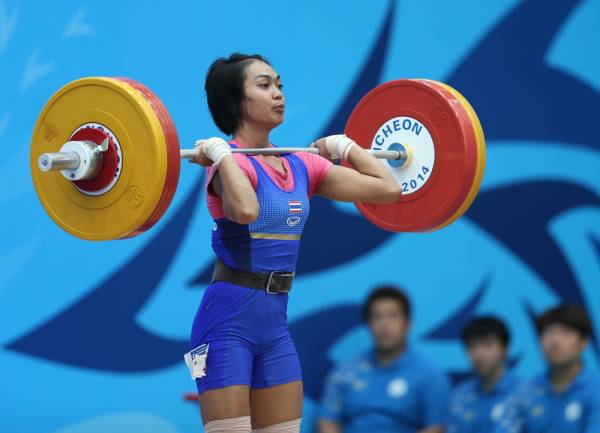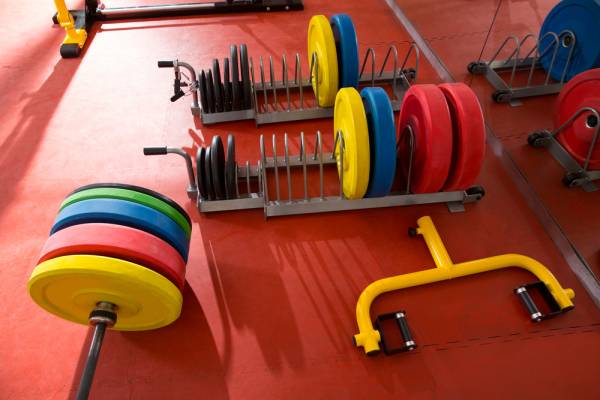We held our first ever movement pattern seminar at Takano Athletics just recently. It turned out extremely well as the attendees were exposed to something that was a new and different concept to many of them – the movement of the body during the performance of the snatch and the clean and jerk.
The Body in Movement
Most of the focus in the training of weightlifting for many new athletes is on the movement of the bar. While this is an important concern, it cannot be the sole concern in the learning of technique.
“The problem is they focus their attention on moving the barbell, and not paying enough attention to what their own body parts are doing to generate the movement.”
So although the movement of the bar is a key focus of weightlifting development, the moving of the body during the performance of the lifts is an indispensable component. I was moved to develop this seminar after running into a great deal of difficulty coaching certain individuals who had very poor movement patterns of their bodies.
RELATED: Chad Vaughn’s Free 4-Week Weightlifting Program
The Developmental Problem With Single-Joint Exercise
Those individuals attempting to become weightlifters after a background of conventional barbell and dumbbell training can have a difficult time if they’ve failed to develop their athleticism. The problem is they focus their attention on moving the barbell, and not paying enough attention to what their own body parts are doing to generate the movement. They lack proprioceptive skills, and a sufficient collection of movement patterns.

TRY THIS: The Importance of Virtuosity
So my seminar was developed to introduce an audience of beginning weightlifters to some exercises that develop athletic movement patterns that are essential for weightlifters. In many countries these movement patterns are developed through elementary school physical education activities. But it is apparent that they are missing from our public school curricula.
Maximize Your Athletic Development
In my seminar, each of the following exercises were described through videos, and then practiced with specific instructions given for performance that would have the best carryover to lifting. You can implement these into your own training or with your own athletes.
- Sprinting from a supine position
- Sprinting from a prone position
- Vertical jumps
- Vertical frog jumps
- Sequential frog jumps
- Single Leg Hopping
- Single Leg Running (with assistance from a partner)
“The practice should not cause enough fatigue to disrupt the weightlifting training proper, but it should instead serve as a form of warm up that also aids in skill acquisition.”
Each of the previous exercises was performed with the intent of learning the rapid extension of the knees and hips and rapid plantar flexion of the ankles. These movement patterns are absolutely necessary to master if the most effective pull and jerk drive are to be achieved. Elite level lifters are exceptional short distance sprinters and leapers.

From there, you or your athletes can also include the following:
- Backward medicine ball toss and jumping good morning– these focus on the rapid extension of the hips while working against sufficient resistance to tax the muscles.
- Straight-legged sit ups, leg throws, and medicine ball sit ups (in pairs)– these are extremely valuable in learning to rapidly flex the hips, a movement pattern essential to moving rapidly under the bar.
- Plyometric push ups– this movement is helpful in developing a rapid elbow extension that is essential for locking out snatches and jerks.
- Pull ups (concentric and eccentric)– these strengthen the elbow flexors and are helpful in aiding elbow flexion during the pull.
“Too much focus on moving the bar distracts from the feeling of the moving body parts during the execution of the lift. Equal, if not more focus should be directed toward the moving of the body and various structures.”
Practical Applications
Although these movements should not be a high priority, they all require some skill acquisition and as such should be practiced diligently during an athlete’s early stages of training. The practice should not cause enough fatigue to disrupt the weightlifting training proper, but it should instead serve as a form of warm up that also aids in skill acquisition.
I’ve used these movements for years to enhance the athletic abilities of my weightlifters, and the mastery of them has been a tremendous aid in the learning of technique and the adjustment of the athlete to very minor distortions of bar pathways and bar placement.
Photos courtesy of Shutterstock.






